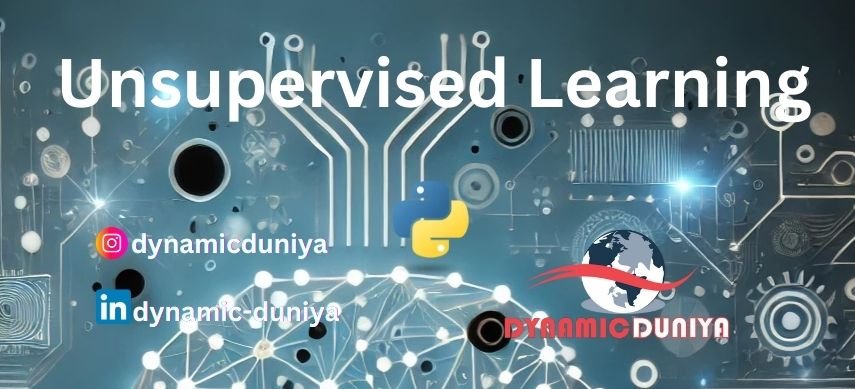- Supervised Learning
-
Overview
- Introduction to Supervised Learning
- Linear Regression and Its Applications
- Logistic Regression for Classification
- Decision Trees and Random Forests
- Support Vector Machines (SVM)
- K-Nearest Neighbors (KNN) Algorithm
- Naïve Bayes Classifier
- Gradient Boosting (XGBoost, LightGBM)
- Overfitting and Underfitting in Models
- Bias-Variance Tradeoff
Introduction to Supervised Learning
Add to BookmarkSupervised Learning is one of the most fundamental and widely used techniques in machine learning. It powers systems that can classify emails, predict prices, detect diseases, and much more.
This tutorial introduces the core concepts of supervised learning, its types, practical examples, and a basic Python implementation. Whether you're a beginner starting out or a professional looking to refresh your knowledge, this guide will provide a clear understanding of the topic.
What is Supervised Learning?
Supervised learning is a type of machine learning where a model is trained using a labeled dataset. Each input (also called a feature) has a known output (also called a label or target). The model learns the relationship between the input and the output so it can make predictions on new data.
Key Concepts
| Term | Description |
|---|---|
| Labeled Data | Dataset where each input has a known output |
| Training | Teaching the model to find patterns in the data |
| Prediction | Estimating the output for new, unseen data |
| Evaluation | Measuring model performance using metrics |
Types of Supervised Learning
Supervised learning can be broadly classified into two categories:
- Regression
Predicts continuous numerical values.
Example: Predicting house prices based on features like area and number of bedrooms. - Classification
Predicts discrete class labels.
Example: Determining whether an email is spam or not.
Real-World Applications
| Application | Type | Example |
|---|---|---|
| House Price Prediction | Regression | Predicting prices based on location and features |
| Email Spam Detection | Classification | Classifying messages as spam or not spam |
| Credit Risk Assessment | Classification | Predicting whether a customer will default on a loan |
| Temperature Forecasting | Regression | Predicting tomorrow’s temperature based on weather data |
| Disease Diagnosis | Classification | Predicting whether a patient has a certain disease |
Python Example: Simple Linear Regression
Let’s build a simple linear regression model using scikit-learn.
# Install required libraries if not already installed:
# pip install scikit-learn matplotlib
from sklearn.linear_model import LinearRegression
from sklearn.model_selection import train_test_split
import numpy as np
import matplotlib.pyplot as plt
# Sample dataset: Years of experience vs. Salary
X = np.array([[1], [2], [3], [4], [5]])
y = np.array([30000, 35000, 40000, 45000, 50000])
# Split data into training and testing sets
X_train, X_test, y_train, y_test = train_test_split(
X, y, test_size=0.2, random_state=42
)
# Create and train the model
model = LinearRegression()
model.fit(X_train, y_train)
# Make predictions
y_pred = model.predict(X_test)
# Display predictions
print("Predicted salaries:", y_pred)
# Plotting the results
plt.scatter(X, y, color='blue', label='Actual Data')
plt.plot(X, model.predict(X), color='red', label='Regression Line')
plt.xlabel("Years of Experience")
plt.ylabel("Salary")
plt.title("Simple Linear Regression")
plt.legend()
plt.show()Output -
Predicted salaries: [35000.]This is a basic example that demonstrates how a supervised learning algorithm (in this case, linear regression) learns from labeled data and makes predictions.
Tips for Beginners
- Start by understanding how data is structured in supervised learning: input features (X) and target outputs (y).
- Use small, easy-to-understand datasets for practice.
- Use visualization tools like Matplotlib to see how models make predictions.
Tips for Professionals
- Explore advanced evaluation metrics: R², MAE, RMSE for regression; Precision, Recall, F1-score for classification.
- Preprocess your data properly (e.g., normalization, encoding categorical variables).
- Use cross-validation to prevent overfitting and ensure robust performance.
- Understand model assumptions and hyperparameters to tune for better results.
Summary
- Supervised learning requires labeled data.
- It includes regression and classification tasks.
- It is used in a wide range of applications across industries.
- Simple tools like
scikit-learnmake it easy to get started with Python.
Prepare for Interview
- JavaScript Interview Questions for 5+ Years Experience
- JavaScript Interview Questions for 2–5 Years Experience
- JavaScript Interview Questions for 1–2 Years Experience
- JavaScript Interview Questions for 0–1 Year Experience
- JavaScript Interview Questions For Fresher
- SQL Interview Questions for 5+ Years Experience
- SQL Interview Questions for 2–5 Years Experience
- SQL Interview Questions for 1–2 Years Experience
- SQL Interview Questions for 0–1 Year Experience
- SQL Interview Questions for Freshers
- Design Patterns in Python
- Dynamic Programming and Recursion in Python
- Trees and Graphs in Python
- Linked Lists, Stacks, and Queues in Python
- Sorting and Searching in Python
Random Blogs
- Robotics & AI – How AI is Powering Modern Robotics
- Career Guide: Natural Language Processing (NLP)
- Government Datasets from 50 Countries for Machine Learning Training
- Understanding OLTP vs OLAP Databases: How SQL Handles Query Optimization
- Ideas for Content of Every niche on Reader’s Demand during COVID-19
- Grow your business with Facebook Marketing
- Top 15 Recommended SEO Tools
- What Is SEO and Why Is It Important?
- AI in Marketing & Advertising: The Future of AI-Driven Strategies
- The Ultimate Guide to Machine Learning (ML) for Beginners
- Navigating AI Careers in 2025: Data Science, Machine Learning, Deep Learning, and More
- Datasets for analyze in Tableau
- String Operations in Python
- Time Series Analysis on Air Passenger Data
- AI & Space Exploration – AI’s Role in Deep Space Missions and Planetary Research
Datasets for Machine Learning
- Awesome-ChatGPT-Prompts
- Amazon Product Reviews Dataset
- Ozone Level Detection Dataset
- Bank Transaction Fraud Detection
- YouTube Trending Video Dataset (updated daily)
- Covid-19 Case Surveillance Public Use Dataset
- US Election 2020
- Forest Fires Dataset
- Mobile Robots Dataset
- Safety Helmet Detection
- All Space Missions from 1957
- OSIC Pulmonary Fibrosis Progression Dataset
- Wine Quality Dataset
- Google Audio Dataset
- Iris flower dataset


